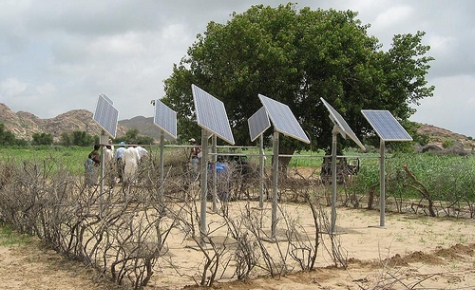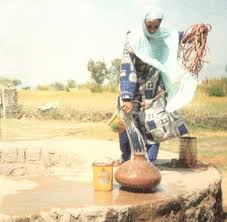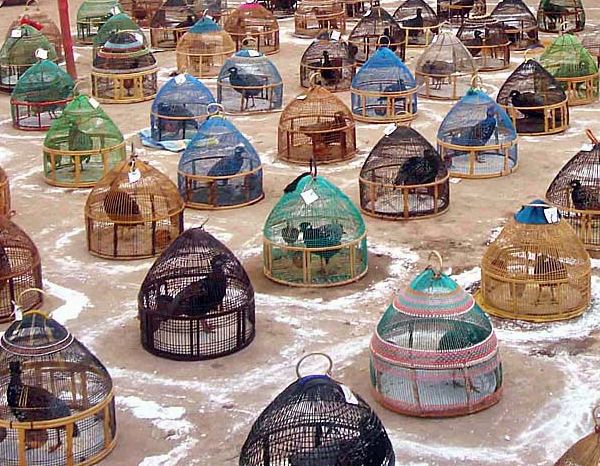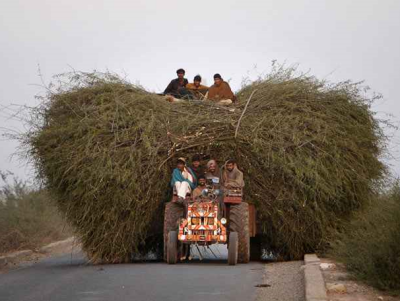Pakistan is the cradle of Indus Valley Civilization, civilisation that is spread over more than 4000 years of history. Archaeological excavations here have revealed evidence of the meticulously planned cities of Harappa and Mohenjodaro that lived and died along the banks of the mighty Indus and its tributaries. The ancient Hindu epics narrate life between the 7th and 5th century BC which carry rich descriptions of the land and people of Indus at that time. These relics throw light on the culture and changing architectural styles of Punjab since the Harappan age. At Taxila near Islamabad, sites associated with great Gandhara Civilization yielded remarkable relics that showcase the magnificient age of Buddhism in the region.
But along with its magnificent past, the rural life in present day Pakistan is as rich even today as it used to be before. The lush green crops which ripen in summer to yield golden harvests, fruit laden orchards which bear delicious fruits similar to those of the paradise and above all a mouth watering food that makes many a chefs to envy. The luscious fruits are so dominant in Punjab’s rural culture that a special variety of mangoes is called Samr-e-Bahisht, literally meaning the fruit of the paradise.
The Punjabi folk in Pakistani rural scene are extrovert; sociable guys who like to eat well and dress well. Even in a tight spot, a Punjabi youth would like to twirl his moustache and say “Khair ae” (am quite well”) to those who ask how he’s getting on. He learns quickly and assimilates new cultures without difficulty; family honour is sacrosanct to Punjabi’s, but in other matters they tend to be liberal. It is a matter of pride to be “up to date”. Their enterprise and capacity to work hard are legendary and it’s a deep ambition of Punjabi guys to “be one’s own boss”: many an émigré Punjabi have started life in a strange land driving a cab or working in a café and gone on to buy out the owner within a couple of years.
A few generations ago, turban was the “crowning glory” of all Punjabis, but it has now gradually disappeared from the scene. It was once a symbol of Punjab’s honour and status. At the same time it offered a protection against the simmering heat in the Punjab plains. The kurta, a long straight-cut, loose shirt teamed with pyjamas, the loose baggy shalwar, or a kind of sarong called a dhoti or tehmad makes up the traditional dress for men. Winter sees the rustic Punjabi in colorful sweaters that wives and mothers are so skilled in making. A shawl in winter and a chador in summer finish this ensemble. When the urban, educated Punjabi steps out to work he will be in shirt and pant or a suit-sartorially indistinguishable from his counterparts in Tokyo or Toronto. Back home in the evening, he is likely to be found in more traditional dress.
The traditional Punjabi shoes, called juttis or khussas retain their popularity with rural folk; they are both elegant and comfortable. Bahawalpur, Sargodha and Hazro in Attock district are famous for khussas. The women in Punjabi villages dress in shalwar topped by a kameez (a garment that can be fitted like a dress loose like the kurta) and accented by a rectangular scarf about 2.5 metres long called the duppatta . She’s fond of her sweaters, but passionately proud of her collection of woolen shawls. Gold is the weakness of Punjabi women – brides are loaded with it. The jewelers of Punjab, stock an enormous range of designs in bangles, necklaces, rings and earrings, nose-pins, ornaments to pin in the hair, anklets and toe-rings.


Culturally, Pakistan’s rural folk enjoy a seemingly happy and contented life. Not that they tend to be passive and lack initiative. On the other hand our rural folk are more energetic and struggle minded than their city dwelling counterparts.
Life in a typical Punjabi village in Pakistan, starts early in the morning. The senior village dwellers along with not so insignificant number of village youth turn to the village mosque for offering their early morning Fajr prayers. After prayer, a delicious rich breakfast awaits the village men. The breakfast itself comprises of either fresh milk (cow or buffalo’s) or a hot brew of tea with a good amount of milk and sugar.
After breakfast, the men folk move to the fields where they start performing different chores of cultivation like plowing, sowing, and harvesting depending upon the season.
Most villages in Pakistan are situated away from the noise of the city life.They are peaceful and silent places. A typical Pakistani village consists of unpaved paths and streets. Its houses are made of mud. However, with lot of young members from rural families which moved to the gulf as part of the “Dubai Chalo” syndrome, have benefitted from the petro dollars. So the villagers now build their houses from bricks and concrete though most of the village people have simple habits and limited needs.


There areVillage life in Pakistan depicts a true picture of our culture. Villagers are very traditional people who are hard workers. They wake up early in the morning with the Fajar prayers and start working in the fields. They work all day long in the field under the sun without caring about the harsh weather. This is the only way for them to earn their livelihood.


They live in a serene and clean environment surrounded by green orchids and lush crop fields. There are beautiful flowing streams and ponds. People live in a very well knit community; they help and solve each other’s problems. The elders have great respect and in the evening they gather together in village “chopal” (a community meeting held every day) and discuss their village problems, which mainly surround the water distribution from a mohga (water outlet from a main stream), good or bad crop during the season and some petty matters of biradris. The discussions in a chopal though full of opposite views and dissensions too, yet at the end there is a more amicable end as in every matter the izzat of the village is and should remain supreme in every village dweller’s eyes. Then there will be discussion about lack of basic amenities, they don’t have proper drinking water, no schools and colleges and somewhere even no sewerage system at all. Some villages really need attention so that they can move on the road to progress.
7,000 Pakistan villages to run on Solar energy
SHARM-al-SHEIKH (Egypt): Minister for Water and Power Raja Pervez Ashraf has said that the government has set a target to electrify 7,000 villages within next five years through solar energy. He was addressing the representatives of more than 120 countries in the second session of the preparatory commission of International Renewable Energy Agency (IRENA), held here.He said that Pakistan has also set a target to add 5% approximately 10,000 MW electricity through renewable energies by year 2030 besides replacement of 5% diesel with bio-diesel by year 2015 and 10% by 2025. Pervez Ashraf said “We need to develop global financial mechanism that responds to the special requirements of the renewable energy sector.”He said that if level playing field is provided to the renewable energy sector, it will prove least expensive, environment friendly and the most sustainable resources of energy. He extended full support of Pakistan to the newly perceived IRENA. He also took part in the voting proceedings for the selections of the place for Headquarter of IRENA and the election of its Director General.A newly conceived, carbon neutral and modern city of UAE, Masdar is also one of the hotly contested places for the IRENA Headquarter. The minister highlighted the commitment of Pakistan in the area of renewable energy. He said that renewable energy technologies would be an essential element in Pakistan’s energy future by making contribution to the diversity and security of energy supply. Solar energy to be provided to 7,000 villages in Pakistan, ‘Pakistan Times’ Business & Commerce Desk some beautiful pictures of culture of Village of Pakistan
some beautiful pictures of culture of Village of Pakistan making lasi made up of milk very delicious
making lasi made up of milk very delicious  taking water out from water well
taking water out from water well  many people keep some beautiful birds in cage
many people keep some beautiful birds in cage  beautiful vehicle use in villages commonly known as tanga.
beautiful vehicle use in villages commonly known as tanga. another way of transportation bail gari
another way of transportation bail gari Pakistan as agricultural country
Pakistan as agricultural country wow look at this
wow look at this 
 Buffalo source of milk
Buffalo source of milk




















1 comment:
Really beautiful blog and nice pictures attached with that blog. Pakistan is so beautiful country all over the world thousands of people visit here every year by getting cheap flights to Pakistan and i also recommend you to take this flight and visit here.
Post a Comment